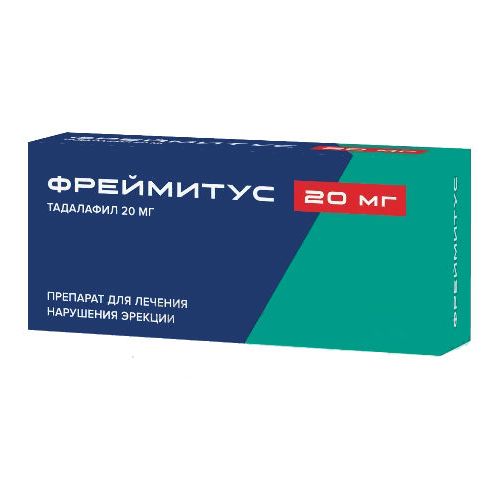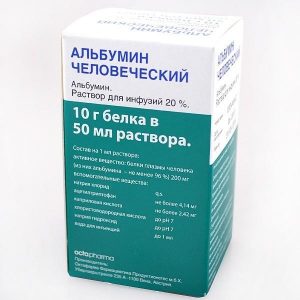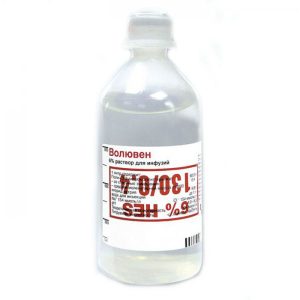Description
Pharmacological action of
Tadalafil is a reversible selective inhibitor of specific type 5 phosphodiesterase (PDE-5) cyclic guanosine monophosphate (cGMP). When sexual arousal causes local release of nitric oxide, inhibition of PDE-5 by tadalafil leads to an increase in the concentration of cGMP in the cavernous body of the penis. The consequence of this is the relaxation of the smooth muscles of the arteries and the flow of blood to the tissues of the penis, which causes an erection.
In vitro studies have shown that tadalafil is a selective PDE-5 inhibitor. PDE-5 is an enzyme present in the smooth muscles of the corpus cavernosum, blood vessels and internal organs, in skeletal muscles, platelets, kidneys, lungs and cerebellum. The effect of tadalafil on PDE-5 is more active than on other phosphodiesterases. Tadalafil is 10,000 times more potent with respect to PDE-5 than with other types of phosphodiesterase (PDE-1, PDE-2, PDE-4 and PDE-7), which are localized in the heart, brain, blood vessels, liver leukocytes and other organs. Tadalafil is 10,000 times more active in blocking PDE-5 than PDE-3, an enzyme that is found in the heart and blood vessels. This selectivity for PDE-5 compared to PDE-3 is important because PDE-3 is an enzyme involved in the contraction of the heart muscle. Moreover, tadalafil is approximately 700 times more active in relation to PDE-5 than PDE-6, which is found in the retina and is responsible for photo transmission. The action of tadalafil in relation to PDE-5 is 9000 times more pronounced than its effect on PDE-8, PDE-9 and PDE-10, and 14 times more pronounced than on PDE-11. The distribution in tissues and the physiological effects of the inhibition of PDE-8 – PDE-11 have not yet been clarified.
Tadalafil in healthy volunteers does not cause a significant change in systolic and diastolic blood pressure compared to placebo in the supine position (average maximum decrease is 1.6 and 0.8 mmHg, respectively) and in the standing position (average maximum decrease is 0 , 2 and 4.6 mmHg, respectively).
Tadalafil does not cause a significant change in heart rate.
Tadalafil does not cause color recognition changes (blue / green), due to its low affinity for PDE-6. In addition, there is no effect of tadalafil on visual acuity, electroretinogram, intraocular pressure and pupil size.
Several studies have been conducted to evaluate the effect of daily tadalafil on spermatogenesis. None of the studies showed an undesirable effect on sperm morphology and motility. One study found a decrease in mean sperm concentration compared to placebo. A decrease in sperm concentration was associated with a higher frequency of ejaculation. In addition, when comparing tadalafil with placebo, there was no undesirable effect on the average concentration of sex hormones (testosterone, luteinizing hormone and follicle-stimulating hormone).
Erectile Dysfunction (ED)
In our studies, tadalafil showed a statistically significant improvement in erectile function and the ability to have full sexual intercourse. Tadalafil has no effect in the absence of sexual arousal.
The efficacy and safety of tadalafil has been studied in clinical trials. An improvement in erection in patients with ED of all degrees of severity was observed when taking 5 mg of tadalafil once a day for 36 hours after administration, as well as maintaining an erection for 16 minutes after administration compared with placebo. In studies of the primary efficacy of 5 mg of tadalafil, 57% and 67% of attempts at sexual intercourse were successful compared to 31% and 37% with placebo. In studies of patients with secondary ED on the background of diabetes mellitus, 41% of attempts at sexual intercourse were successful compared to 28% with placebo.
Benign prostatic hyperplasia (BPH)
In patients with BPH, tadalafil, by inhibiting PDE-5, leads to an increase in the concentration of cGMP not only in the cavernous body of the penis, but also in the smooth muscles of the prostate, bladder and blood vessels that supply them. This in turn increases blood perfusion in these organs and, as a result, reduces the severity of symptoms of BPH. Relaxation of the smooth muscles of the prostate and bladder and inhibition of the afferent innervation of the bladder can further enhance vascular effects.
Clinical studies have shown a decrease in symptoms of BPH within 1 week after taking 5 mg of tadalafil compared to placebo.
In studies involving patients with ED and symptoms of BPH, 5.9 mg of tadalafil were successful compared to 48.3% when taking placebo with 5 mg of tadalafil, and there was a significant improvement in erectile function and a decrease in symptoms of the prostate gland.
Pharmacokinetics
Absorption
After oral administration, tadalafil is rapidly absorbed. The average maximum concentration (Cmax) in blood plasma is achieved on average 2 hours after ingestion.
The rate and extent of absorption of tadalafil are independent of food intake, so the drug can be used regardless of food intake. The time of administration (morning or evening) does not have a clinically significant effect on the rate and extent of absorption.
The pharmacokinetics of tadalafil in healthy volunteers are linear in time and dose. In the dose range from 2.5 to 20 mg, the area under the concentration-time curve (AUC) increases in proportion to the dose. Equilibrium plasma concentrations are reached within 5 days when taking the drug 1 time per day. The pharmacokinetics of tadalafil in patients with erectile dysfunction is similar to the pharmacokinetics of the drug in patients without erectile dysfunction.
Distribution
The average volume of distribution is about 63 L, which indicates that tadalafil is distributed in body tissues.
At therapeutic concentrations, 94% of tadalafil binds to plasma proteins. Plasma protein binding does not change with impaired renal function.
In healthy volunteers, less than 0.0005% of the administered dose was found in semen.
Metabolism
Tadalafil is mainly metabolized by the cytochrome P450 isoenzyme CYP3A4. The main circulating metabolite is methylcatecholglucuronide. This metabolite is at least 13,000 times less active against PDE-5 than tadalafil. Therefore, the concentration of this metabolite is not clinically significant.
Excretion
In healthy volunteers, the average clearance of tadalafil when taken orally is 2.5 l / h, and the average half-life (T1 / 2) is 17.5 hours. Tadalafil is excreted mainly in the form of inactive metabolites, mainly by the intestines (about 61 % of the dose) and, to a lesser extent, by the kidneys (about 36% of the dose).
Elderly patients
Healthy elderly volunteers (65 years of age and older) had lower tadalafil clearance when ingested, resulting in an increase in AUC of 25% compared with healthy volunteers aged 19 to 45 years. This difference is not clinically significant and does not require dose selection.
Patients with renal failure
Clinical studies have shown that when taking a single dose of tadalafil (5-20 mg), AUC increases by about 2 times in patients with mild (creatinine clearance (CC) 51-80 ml / min), medium (CC 31-50 ml / min) and end-stage renal failure (dialysis). In patients on hemodialysis, Cmax of tadalafil is 41% higher than in healthy volunteers. Tadalafil is practically not excreted during hemodialysis.
Patients with hepatic impairment
The pharmacokinetics of tadalafil in patients with mild to moderate hepatic impairment (Child-Pugh classes A and B) is comparable to that in healthy volunteers. For patients with severe hepatic insufficiency (Child-Pugh class C classification), data are limited, therefore, before using the drug, it is necessary to assess the benefit / risk ratio.
Patients with diabetes mellitus
In patients with diabetes mellitus with tadalafil, the AUC is approximately 19% less than in healthy volunteers. This difference does not require dose selection.
Indications
erectile dysfunction
lower urinary tract symptoms in patients with BPH (for a dosage of 5 mg)
erectile dysfunction in patients with urinary tract symptoms in patients with BPH (for a dosage of 5 mg).
Contraindications
hypersensitivity to tadalafil or to any substance that is part of the drug
taking preparations containing any organic nitrite
children under 18 years of age
contraindications to sexual activity in patients with diseases of the cardiovascular system: myocardial infarction the last 90 days, unstable angina, the occurrence of an angina attack during intercourse, chronic heart failure II-IV classes according to NYHA classification, uncontrolled Rui arrhythmia, hypotension (blood pressure <90/50 mm Hg. Art.), uncontrolled hypertension, ischemic stroke over the past 6 months vision loss due to non-arterial anterior ischemic optic neuropathy (regardless of the connection with PDE-5 inhibitors) simultaneous administration of doxazosin, other drugs for the treatment of erectile dysfunction, guanylate cyclase stimulants (riotsiguat) (see section Interaction with other drugs ) use in patients with severe renal failure (CC <30 ml / min). lactase deficiency, lactose intolerance, glucose-galactose malabsorption. Caution Severe liver failure (Child-Pugh class C) due to insufficient data on the efficacy / safety of , concomitant use of selective alpha-blockers. strong inhibitors of the CYP3A4 isoenzyme (ritonavir, saquinavir, ketoconazole, itraconazole, erythromycin), 5-alpha reductase inhibitors (see section Interaction with other drugs ) predisposition to priapism (with sickle-cell or leukemia) , anatomical deformation of the penis (angular curvature, cavernous fibrosis or Peyronie’s disease). Special instructions Diagnosis of ED and BPH should include identification of the underlying cause of the disease, appropriate medical examination, determination of treatment tactics and individual assessment of the benefit / risk ratio. Sexual activity has a potential risk for patients with cardiovascular diseases, therefore, treatment of ED should not be carried out in men with heart diseases in which sexual activity is not recommended. Like other PDE-5 inhibitors, tadalafil may have a systemic vasodilator effect, which can lead to transientlowering blood pressure and enhancing the hypotensive effect of nitrates, alpha-blockers (see section “Interaction with other drugs”). Before prescribing the drug, it is necessary to carefully assess the likelihood of such adverse reactions in patients with cardiovascular disease. Patients with a suspected diagnosis of BPH should be screened to rule out prostate cancer. Non-arterial anterior ischemic optic neuropathy (NAPION) is a cause of visual impairment, including complete loss of vision. There are rare post-marketing reports of cases of development of NAPION, in time associated with the intake of PDE-5 inhibitors. It is currently impossible to determine whether there is a direct relationship between the development of NAPION and the intake of PDE-5 inhibitors or other factors. Patients should be warned that in case of sudden loss of vision, stop taking tadalafil and seek medical help. Patients should also be informed that people who have undergone NAPION have an increased risk of re-developing NAPION. Priapism has been reported with PDE-5 inhibitors, including tadalafil. Patients should be informed about the need to immediately seek medical help in case of an erection lasting 4 hours or more. Untimely treatment of priapism leads to damage to the tissues of the penis, resulting in irreversible impotence. The efficacy of the drug in patients undergoing pelvic surgery or radical nerve-sparing prostatectomy is unknown. Effect on the ability to drive vehicles, mechanisms Despite the fact that the incidence of dizziness against placebo and tadalafil is the same, during treatment, care must be taken when driving vehicles and engaging in other potentially dangerous activities that require increased concentration of attention and speed of psychomotor reactions . Patients should be aware of the possible development of drowsiness when taking the drug, especially at the beginning of therapy or in combination with alcohol. Composition Active ingredient: tadalafil – 20,000 mg. Excipients: lactose monohydrate (milk sugar) – 273,300 mg microcrystalline cellulose – 57,000 mg croscarmellose sodium – 24,000 mg hyprolose – 2,660 mg sodium lauryl sulfate – 1,140 mg magnesium stearate – 1,900 mg. Shell composition: hypromellose – 5.800 mg macrogol-4000 – 1.700 mg of titanium dioxide – 2, 300 mg iron dye oxide yellow – 0.200 mg. Dosage and administration For oral administration. Use of the drug for ED For patients with frequent sexual activity (more than twice a week), the recommended frequency of administration: daily, 5 mg (1 tablet) once a day, at the same time, regardless of food intake. The dose should be periodically monitored and reviewed, if necessary. The daily dose can be reduced to 2.5 mg, depending on individual sensitivity. For patients with infrequent sexual activity (less than twice a week), the recommended frequency of administration: 20 mg (1 tablet or 4 tablets in a dose of 5 mg) immediately before sexual activity according to the instructions for medical use. The maximum daily dose of the drug is 20 mg. Use of the drug for BPH or ED + BPH The recommended dose is 5 mg (1 tablet) once a day. The drug should be taken at approximately the same time of the day, regardless of food intake and time of sexual activity. The duration of treatment is set by the doctor individually. In patients with severe renal failure (CC <30 ml / min or hemodialysis), the use of the drug is contraindicated. In patients with mild renal insufficiency (CC 51-80 ml / min) and moderate severity (CC 31-50 ml / min) or mild and moderate hepatic insufficiency (Child-Pugh classification classes A and B), and also in elderly patients, dose adjustment is not required. Side effects According to the World Health Organization (WHO), adverse reactions are classified according to their frequency of development as follows: very often ( 1/10), often ( 1/100, <1/10), infrequently ( 1/1000, <1/100), rarely ( 1/10000, <1/1000) and very rarely (<1/10000) the frequency is unknown - according to the available data, it was not possible to establish the frequency of occurrence. Immune system disorders: infrequently – hypersensitivity reactions rarely – angioedema 3. Nervous system disorders: often – headache infrequently dizziness rarely – stroke 1 (including hemorrhagic), transient ischemic attack 1, fainting, migraine 3, epileptic seizure, transient amnesia. Disorders of the organ of vision: infrequently – blurred visual perception, pain in the eyeball rarely – disturbed visual fields, swelling of the eyelids, injection of scleral vessels, non-arterial anterior ischemic optic neuropathy 3, occlusion of the retinal vessels 3. Hearing disorders and labyrinth disorders: infrequently – tinnitus / ringing rarely – sudden hearing loss 2. Disorders of the heart 1: infrequently – palpitations, tachycardia rarely – myocardial infarction, ventricular rhythm disturbances 3, unstable angina pectoris. Vascular disorders: often – ² Ñhot flashes ² Ñ of blood infrequently – lowering blood pressure (BP) (in patients taking antihypertensive drugs), increased blood pressure. Disorders of the respiratory system, chest and mediastinal organs: often – nasal congestion infrequently – shortness of breath, nosebleeds. Disorders of the gastrointestinal tract: often – dyspepsia, gastroesophageal reflux infrequently – abdominal pain. Disorders of the skin and subcutaneous tissue: infrequently – rash, hyperhidrosis (excessive sweating) rarely – urticaria, Stevens-Johnson syndrome 3, exfoliative dermatitis 3. Violations of the musculoskeletal and connective tissue: often – back pain, limb pain, myalgia. Disorders of the kidneys and urinary tract: often – hematuria. Disorders of the genitals and mammary gland: infrequently – bleeding from the penis, hemospermia rarely – prolonged erection, priapism 3. General disorders and disorders at the injection site: infrequently – chest pain 1 rarely – swelling of the face 3, sudden cardiac death 1.3. 1 Observed in patients previously having cardiovascular risk factors. However, it is impossible to determine exactly whether these phenomena are directly related to these risk factors, to tadalafil, with sexual arousal or a combination of these or other factors. 2 Sudden hearing loss has been reported in a small number of cases during post-marketing and clinical trials using all PDE-5 inhibitors, including tadalafil. 3 Adverse reactions detected during post-marketing studies not observed in clinical placebo-controlled studies. Overdose When prescribing tadalafil once in a dose of up to 500 mg to healthy individuals and repeatedly in a dose of up to 100 mg / day in patients with ED, undesirable reactions were comparable, as with lower doses. In case of overdose, symptomatic treatment is necessary. With hemodialysis, tadalafil is practically not excreted. Storage conditions At a temperature not exceeding 25 ° C. Keep out of the reach of children. Expiration 3 years. Do not use after expiration date. Active substance Tadalafil Terms and conditions prescription dosage form tablets




